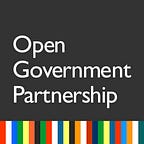Solution or Substitute? Transparency in Corporate Sustainability Standards
Transparency has become the most popular tool to help companies curb their excesses. When does it work?
By Joseph Foti
The interaction between government and the private sector is at the heart of open government. Open government approaches are not limited to transparency of government. Rather, they also cover government-held information. This is not a side show. It is, in fact, baked into the OGP Articles of Governance.
Some of the most successful cases of targeted transparency largely focus on private sector activities. Several of these, like pollutant release transfer registers, disclosing real company ownership, or lobbying transparency, are now cornerstones of the open government movement. Other consumer protection or nutritional disclosures, fundamental to public health, are so commonplace that we probably rarely think of them as government-led transparency programs.
A new default
As the world tackles issues of sustainability, inequality, and democratic decline, there is a growing reliance on Environmental, Social, and Governance (ESG) Standards to guide business. These reforms aim to create incentives for more sustainable growth.
This trend is borne out by data. The Carrots & Sticks project pulls together hundreds of ESG regulations, requirements, and tools. The database uses a combination of natural language processing and machine learning to tag those initiatives.
Figure: Carrots & Sticks is a database of ESG requirements worldwide
The results are illuminating, even allowing for the fuzziness of definitions and the imprecision of artificial intelligence tools.
Here are a few quick takeaways about the state of ESG and transparency:
- Transparency dominates: More than half of the rules in the database are transparency and disclosure requirements.
- Governments are the main actors: Governments remain the primary issuers of ESG policies. This means that markets, on the whole (if the data is remotely representative), are not self-regulating anywhere near the volume of governments. There is some regional variation, with the US and Canada having the highest absolute and relative amount of industry-led disclosure initiatives.
- Voluntary disclosure regimes are growing: The absolute number of policies has increased but mandatory policies have declined relative to voluntary policies.
- Disclosure about good governance is rare: ESG disclosure rules do not deal much with private sector interaction with public officials. Disclosure requirements around Sustainable Development Goal 16 show up rarely in the database. Such disclosures would include core open government objectives like corruption controls, access to justice, countering corruption, and right to information. This could be a reflection of unpopularity of such reforms, an artifact of the tagging process, or reflective of the operating definition of governance in ESG. (This last one is important, as many ESG standards often focus on corporate governance rather than private sector-government interactions.)
Substitute or slow build?
When are these corporate disclosure requirements likely to be successful? They can help when markets are likely to respond to such disclosures or regulators use disclosures to guide compliance and enforcement, provided the cost of bad behavior is high enough.
But while transparency is the most popular way to do things, it is also the most popular way not to do things. A personal anecdote: a UN negotiator told me in private once, “When we can’t get real decisions, we bargain for transparency. And when we can’t get transparency, we talk about technology.”
It is probably a question for future research, but how many of these disclosure requirements exist instead of accountability, rather than leading to actual change? They can be a first step or an excuse.
What remains incontrovertible is that transparency is the flavor of the day. To that end, as disclosure requirements increasingly become the norm, we should ask ourselves two questions:
- Is there a system for feedback and consequences (good or bad) for behaving in a more sustainable way? This may be courts, elections, or public opinion — but it should have some consequence.
- If not, is this transparency requirement plausibly the first step toward getting actual accountability and changing behavior?
If the answer is “no” to both questions, we should ask ourselves whether our time would be better spent doing something else.
Go deeper on open government and the private sector
For more on open government and the private sector, please visit OGP’s series on how businesses, investors, and private sector regulators are using open government approaches to reduce risks and clean up government.
